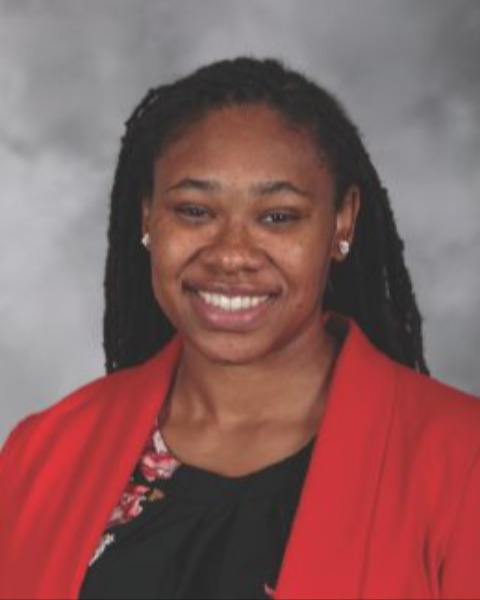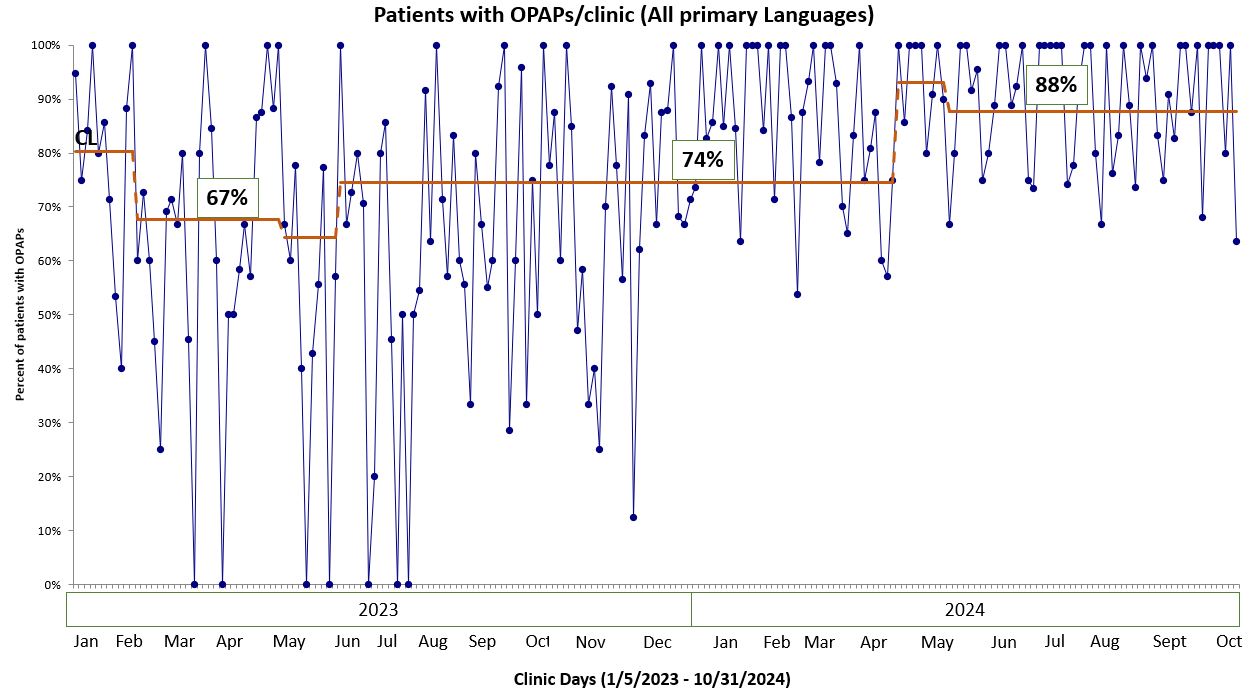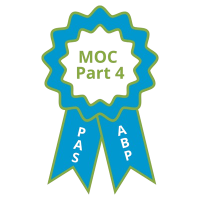Health Equity/Social Determinants of Health 4
Session: Health Equity/Social Determinants of Health 4
706 - Using Quality Improvement to Narrow the Equity Gap: Translating Sickle Cell Pain Plans for Families who use a Language Other Than English
Sunday, April 27, 2025
8:30am - 10:45am HST
Publication Number: 706.7070
Meghan D. Drayton Jackson, Riley Children's Health, Indiana University School of Medicine, PLAINFIELD, IN, United States; Brenda White, Riley Hospital for Children at Indiana University Health, Indianapolis, IN, United States; Kathleen M. Head, Riley Hospital for Children at Indiana University Health, Indianapolis, IN, United States; Allison M. Hession, Riley Hospital for Children at Indiana University Health, Indianapolis, IN, United States; Megan Coral. Matthes, Riley Hospital for Children at Indiana University Health, Indianapolis, IN, United States

Meghan D. Drayton Jackson, DO, MBOE
Associate Professor
Riley Children's Health, Indiana University School of Medicine
PLAINFIELD, Indiana, United States
Presenting Author(s)
Background: Quality improvement (QI) is a valuable approach for addressing healthcare inequities. Stratifying QI efforts by race, ethnicity, and language (REaL) data helps to identify such gaps. We completed a QI initiative to increase the development and distribution of individualized outpatient pain action plans (OPAPs) to our patients with sickle cell disease (SCD). By 2023, we increased the number of OPAPs distributed and documented in the electronic medical record (EMR) to 74% (Figure 1). In 2023, among our 434 patients with SCD, 48 (13%) spoke a language other than English (LOE), across six languages. When stratifying this data by language, from January to May 2023, only 47% of patients who use a LOE had an OPAP, compared to 80% of English-speaking patients, revealing a 37% equity gap (Figure 2).
Objective: We aimed to close the equity gap perpetuated by our previous QI initiative by developing and implementing a process for timely translation and delivery of individualized OPAPs to families with a LOE.
Design/Methods: A multidisciplinary team used QI methodology to identify root causes: an unclear translation request process, complex clinic workflows, and challenges in delivering translated OPAPs (T-OPAPs). Starting in December of 2023, multiple Plan-Do-Study-Act (PDSA) cycles were implemented to develop a standardized process for translation requests, documenting T-OPAPs in the EMR, and mailing them to families. We conducted surveys to assess whether families received and used the T-OPAPs. Eligible families were patients with SCD > 6 months of age who use a LOE. We excluded those followed by chronic pain team. QI Macros and statistical process control charts were used for statistical analysis.
Results: Our intervention increased T-OPAP distribution to patients who use a LOE from 43% to 90%, effectively closing the equity gap (Figure 2). Starting in May, we surveyed 16 families who should have received a T-OPAP; 13 confirmed receipt of mailed copy, and 6 (44%) recalled receiving it within a week (Figure 3a). Additionally, 15 (94%) of families felt the OPAP was extremely or very helpful (Figure 3b).
Conclusion(s): QI can maintain, improve, or exacerbate equity gaps. While our initiative improved individualized care for most patients, it initially widened the gap for families who use a LOE. By stratifying data by language, we identified and addressed this inequity. Conducting QI with an equity lens or conducting equity-focused QI initiatives are tangible methods to reduce healthcare inequities. Next steps include refining our process for a more timely and reliable delivery of the T-OPAP.
Percent of Patients with OPAPs/Clinic day for all Primary Languages
 P-chart of percentage of eligible patients who had an up-to-date (written in the past 12 months) OPAP per SCD comprehensive clinic visit. X-axis is time, each data point is a clinic day. We have two comprehensive SCD clinics/week. The Y-axis is the percentage of completed OPAPs. CL= Centerline, the mean. Each centerline shift aligns with QI statistical process control chart rules and indicates a statistically significant change. The decreased spread in data points in 2024 also indicates that our process has become more reliable.
P-chart of percentage of eligible patients who had an up-to-date (written in the past 12 months) OPAP per SCD comprehensive clinic visit. X-axis is time, each data point is a clinic day. We have two comprehensive SCD clinics/week. The Y-axis is the percentage of completed OPAPs. CL= Centerline, the mean. Each centerline shift aligns with QI statistical process control chart rules and indicates a statistically significant change. The decreased spread in data points in 2024 also indicates that our process has become more reliable. Percent of Patients with OPAPs/Clinic day stratified by English and LOE
.jpg) P-chart centerlines of percentage of eligible patients who had an up-to-date (written in the past 12 months) OPAP per SCD comprehensive clinic visit stratified by language. The Blue line is patients who use English as a primary language, and the red line is patients who use any LOE. From Jan – May 2023, there was a 37% equity gap. Before December of 2023, families who used a LOE only received OPAPs in English. By May of 2024, families who use a LOE have a higher percentage of receiving OPAPs. This is likely due to the smaller numbers of patients who use a LOE per clinic. CL= Centerline, the mean. PDSA 1= Single provider trialed process of sending a modified return to clinic message to notify nurse coordinators and scheduler that OPAP required translation, nurse coordinators then sent message to request translation, once translated copy received nurse coordinator scans it into EMR and scheduler mails it to address on file. PDSA 2= Spread process to other providers. PDSA 3= Initiation of family surveys in clinic. Simply discussing who was eligible for the survey at team meetings heightened awareness of the T-OPAP process.
P-chart centerlines of percentage of eligible patients who had an up-to-date (written in the past 12 months) OPAP per SCD comprehensive clinic visit stratified by language. The Blue line is patients who use English as a primary language, and the red line is patients who use any LOE. From Jan – May 2023, there was a 37% equity gap. Before December of 2023, families who used a LOE only received OPAPs in English. By May of 2024, families who use a LOE have a higher percentage of receiving OPAPs. This is likely due to the smaller numbers of patients who use a LOE per clinic. CL= Centerline, the mean. PDSA 1= Single provider trialed process of sending a modified return to clinic message to notify nurse coordinators and scheduler that OPAP required translation, nurse coordinators then sent message to request translation, once translated copy received nurse coordinator scans it into EMR and scheduler mails it to address on file. PDSA 2= Spread process to other providers. PDSA 3= Initiation of family surveys in clinic. Simply discussing who was eligible for the survey at team meetings heightened awareness of the T-OPAP process.T-OPAP Family Survey
 Sixteen families who should have received a T-OPAP were surveyed at a following clinic visit to evaluate timely delivery of the T-OPAP in relation to the visit they received the OPAP in English and helpfulness. 44% recall receiving the T-OPAP within 1 week or less while 38% report receiving it >2 weeks later or cannot recall the timeframe. If they did not receive the T-OPAP in the mail, the scanned translated copy is printed and provided in clinic. All patients felt the OPAP was helpful.
Sixteen families who should have received a T-OPAP were surveyed at a following clinic visit to evaluate timely delivery of the T-OPAP in relation to the visit they received the OPAP in English and helpfulness. 44% recall receiving the T-OPAP within 1 week or less while 38% report receiving it >2 weeks later or cannot recall the timeframe. If they did not receive the T-OPAP in the mail, the scanned translated copy is printed and provided in clinic. All patients felt the OPAP was helpful.

